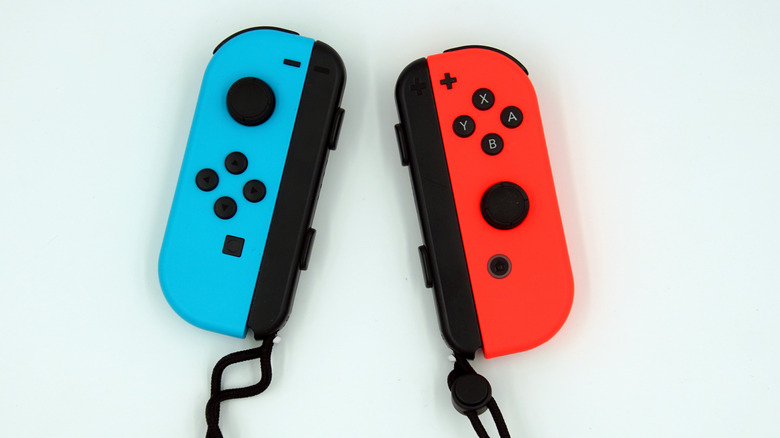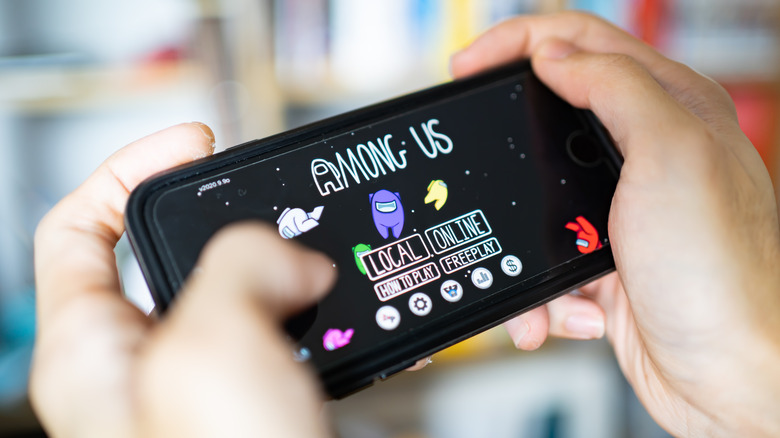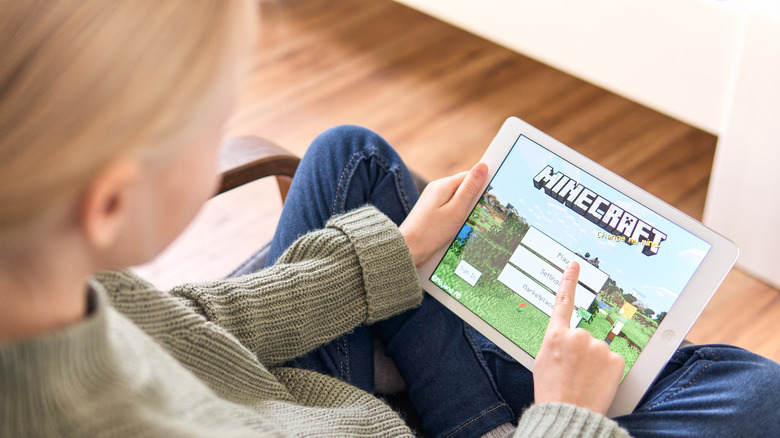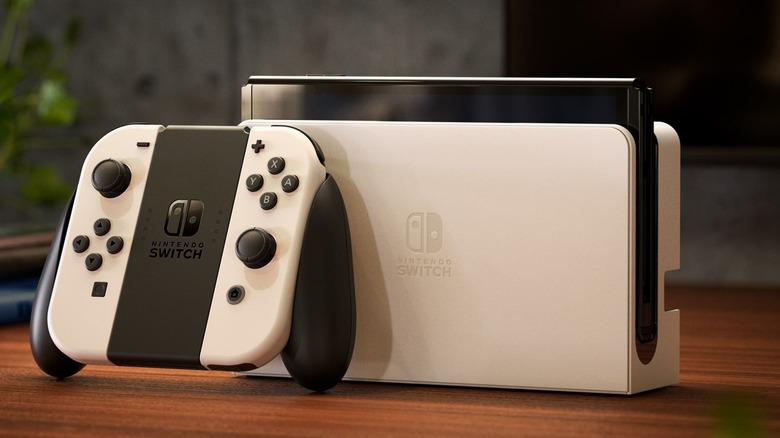

Here's How To Pair Your Nintendo Switch Joy-Cons To Your iPhone On iOS 16
source link: https://www.slashgear.com/1024644/heres-how-to-pair-your-nintendo-switch-joy-cons-to-your-iphone-on-ios-16/
Go to the source link to view the article. You can view the picture content, updated content and better typesetting reading experience. If the link is broken, please click the button below to view the snapshot at that time.
Here's How To Pair Your Nintendo Switch Joy-Cons To Your iPhone On iOS 16

You've been able to pair third-party controllers from Sony and Microsoft with the iPhone and iPad for a number of years now; with the release of iOS 16, you can pair your Joy-Con controllers (and Switch Pro controller!), too. With the inclusion of Joy-Cons, iPhones now support all of the controllers from Sony, Microsoft, and Nintendo's latest round of gaming consoles, according to Apple. Support for pairing Joy-Cons to an iPad is coming later when iPadOS 16 is made available.
By pairing a controller, you can play games like "NBA 2K," "Call of Duty," and select controller-compatible titles on Apple Arcade without having to use touch screen controls, which can be tricky on small iPhone screens. Joy-Con controllers are a little more complex than PlayStation and Xbox controllers, however, in that each Joy-Con broadcasts its own Bluetooth signal to your iPhone. Fortunately, that doesn't make the setup process any more difficult, though it may take an extra minute or two.
How to pair Nintendo Switch Joy-Cons with an iPhone

The process of pairing Joy-Con controllers with an iPhone isn't much different than the method used with other controllers, as explained by Apple in a support document. Here's what you'll need to do to pair your Joy-Con controllers:
- Make sure your iPhone is up to date and running iOS 16 or later.
- On your iPhone, head to Settings > Bluetooth.
- On one of the Joy-Con controllers, find the circular button located between the bumper buttons on the side rail and press it for about 5 seconds
- Within the iPhone's Bluetooth menu, the controller will appear in the Other Devices section. The entry should indicate whether it is the left or right Joy-Con controller.
- Tap the Joy-Con in the Bluetooth menu to pair it with your iPhone.
- Repeat these steps to pair the other Joy-Con controller.
Joy-Con controllers are unique in that they're technically two different controllers. As Nintendo points out in its support document, the Nintendo Switch software pairs two Joy-Con controllers together. Apple has added a similar implementation to iOS 16 so that if you pair two Joy-Cons, iOS will see them as a single controller. Of course, if you choose, you're welcome to pair just a single controller and use it as a standalone gamepad.
How to customize Joy-Con controllers on iOS 16

After you pair the controllers with the iPhone, you'll have the option to customize them on a per-game basis. You can essentially change what each face button will do and enable haptic feedback, screenshot capture, or video clip capture, according to Apple. This can be especially useful if games have controls mapped for different controllers. For example, the A/B buttons may be reversed in a game because it was designed with a PlayStation controller in mind. Alternatively, you may just want to change a few controls around because it makes more sense to you.
To customize the controllers on an iPhone runnings iOS 16 or newer, head to Settings > General > Game Controller and tap the name of your controller. From there, tap Customize Controller and choose which game you'd like to customize the controls in. This is a very powerful feature akin to what's possible for PC gamers, as on traditional game consoles, you get very little or no customizability. It's a huge win not only for those who want to change one or two buttons around but for accessibility, too.
Nintendo Switch OLED Vs Nintendo Switch: Upgrade Or Pass

The tech community was expecting a Pro version of the Nintendo Switch but on July 6 an OLED model was announced as the fourth major release of the handheld console. Called Nintendo Switch (OLED model), the new version of Nintendo handheld game console is a bit of a subjective choice depending on whether you already own the Switch or you're a first-time user of a handheld console.
Anticipation for the Nintendo Switch's next version has been on an all-time high for an agonizingly long time. Now that the handheld is finally a reality, let's take a look at the key differences and similarities that'll help you make up your mind whether to buy or pass on this hot new gadget.
Comparing the display
Nintendo choosing to highlight the OLED aspect in the name of its new console is somewhat strange, but then, we'll have to live with it. That's where one of the biggest differences in the two consoles lies. The latest announced Switch gets a 7-inch OLED multi-touch capacitive display with 1280x720p resolution. The standard Nintendo Switch on the other hand has a 6.2-inch multi-touch capacitive LCD touchscreen with a resolution of 1280x720p.
This means the new OLED model will have deeper blacks, far better contrast and an overall vibrant look. The resolution being the same for both is slightly disappointing as there will be no bump up in the level of details which is really valuable for gamers. It actually gives a strategic advantage in some gaming titles where a sharper level of detail means better viewing capability.
Design comparison
Both the consoles are more or less similar (if not identical) in basic shape and aesthetics. The bigger OLED screen eats up the somewhat dated large bezel design of the standard model – thereby having a very sleek look to it. Other minor changes come in the form of a taller profile – the new model measure 0.1 inches larger – and weighs 0.05 pounds heavier.
The biggest and most satisfying change however is in the kickstand which has been delightfully revamped. Compared to the old plastic kickstand on the standard Switch that was a sort of wobbly and non-reliable, the newer kickstand is a full-width rear stand to keep the console sturdy in tabletop mode.
Coming on to the main consoles, both are offered in the Neon color option – paired to one red and one blue Joy-Con. The standard Switch other than that has the all-gray option. The OLED model on the other hand has a clean white option with off-white controllers matched to the off-white dock.
Controllers, dock and Ethernet port
Of what's known so far and by the look of things, the Joy-Cons shipping with the OLED version is identical in form to their predecessors. The rail system on the new console looks identical to the old one – meaning your old Joy-Cons will work with the new one and the new ones will function just as fine with the standard model.
Switch OLED gets a slightly redesigned dock in off white color. The older console had a black dock, so that is another change when the two are compared. The new version ditches the USB Type-A port on the standard Switch for a LAN port – a feature you'll either like or dismiss.
The new model gets an Ethernet (LAN) port to allow gamers to plug in the cable from the internet router to the console's dock for better connectivity and signal strength in comparison to Wi-Fi. This will come in handy when outputting to a big screen. Unfortunately, the console cannot output 4K signal as it does not improve from its predecessor, which is capped at 1080p.
Storage and processing power
Nintendo Switch OLED gets double the storage of the standard version. That means you will get base storage of 64GB as compared to 32GB with the option to bump the storage via the microSD card.
A big disappointment on the new console is the same chipset as on the predecessor. It is powered by the custom Nvidia Tegra X1 chipset, and this could be one reason we aren't excited about this new offering. Nintendo should have provided a better chipset for superior performance and rendering of graphics of the current as well as the games in the future.
Battery life comparison
There is no upgrade in the battery capacity between the two models; the OLED option features the same 4,310mAh Lithium-ion power cell as the original Switch. According to Nintendo, the new model should be able to eke out almost the same battery life of about 4.5 to 9 hours on a single charge as the predecessor. The 2017 classic Switch model had a battery life of around 2.5 to 6.5 hours.
The new model has a bigger screen and OLED display yet it's incredible to achieve almost the same backup as the previous version. The display panel of the old model has a brightness of 320nits while the newer OLED variant is expected to feature better peak brightness, it would not be close to the 500-600nits delivered by OLED phones though.
Price and availability
To get your hands on the Switch OLED model you'll have to wait until October 8, 2021. The handheld gaming console will carry a price tag of $349.99, which is right on point when it comes to attracting prospective buyers. The price is $50 more than the current Switch that misses on a few features the new kid in town will offer.
The UK pricing of the Switch OLED is not yet announced but we assume it is going to be around the £300 mark since the Nintendo Switch is currently priced at £280 in the region.
Wrap-up
Nintendo Switch OLED comes with some worthy upgrades but it has certain disappointments that should not have been ignored. Omission of 4K is one feature that'll be missed deeply since a huge collection of TVs are capable of the output resolution today.
Similarly, the handheld's display resolution should have been beefed up, at least to 1080p. On the hind side, the inclusion of the Ethernet port is a welcome step and the kickstand is another design overhaul worth a mention.
Should you buy the new OLED version of the Switch or not? The answer is fairly simple – if you already own the older Switch model then there is no compelling case for you to upgrade to the new model. However, if you don't have one, the Switch OLED will not disappoint.
Recommend
About Joyk
Aggregate valuable and interesting links.
Joyk means Joy of geeK